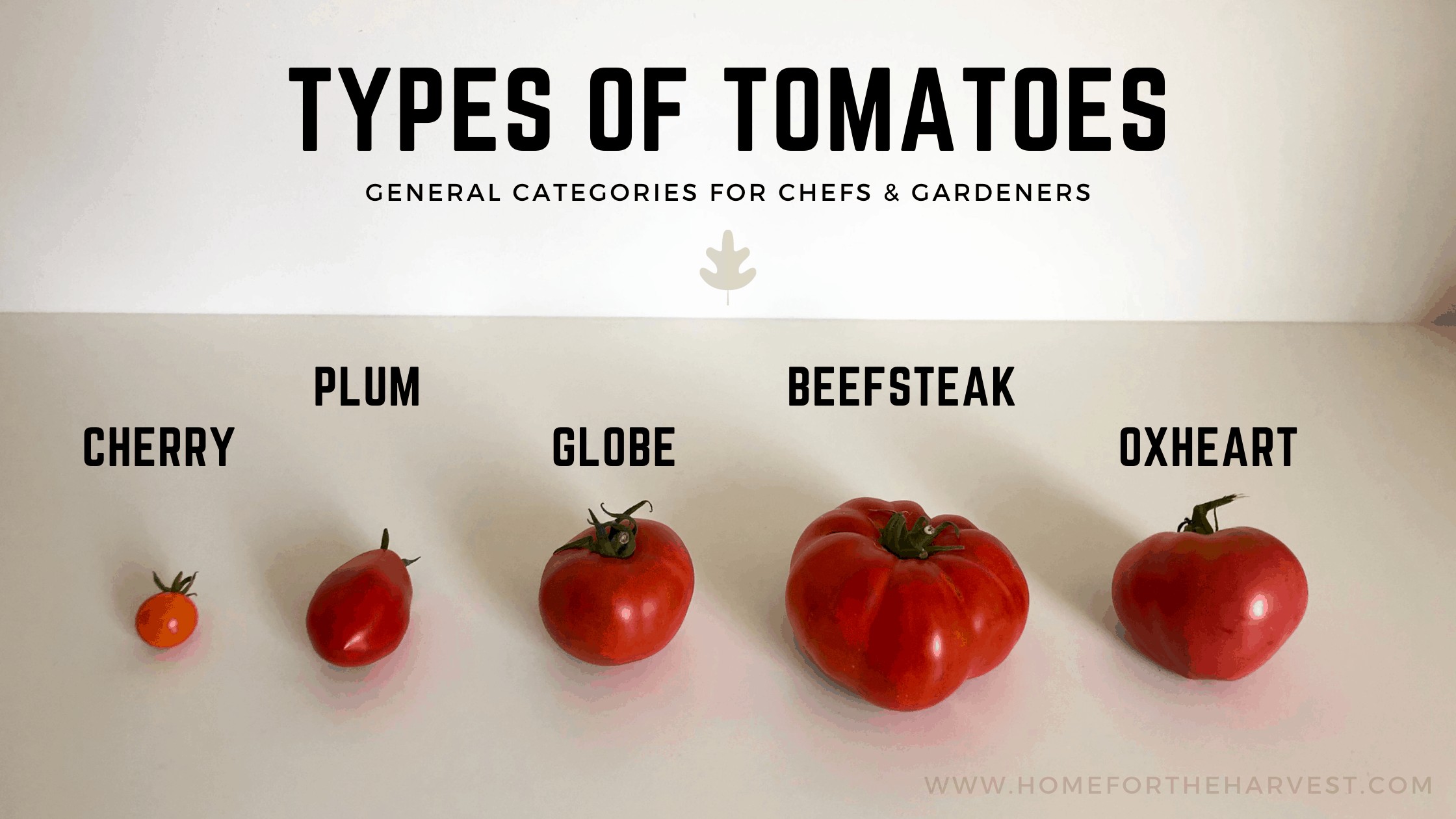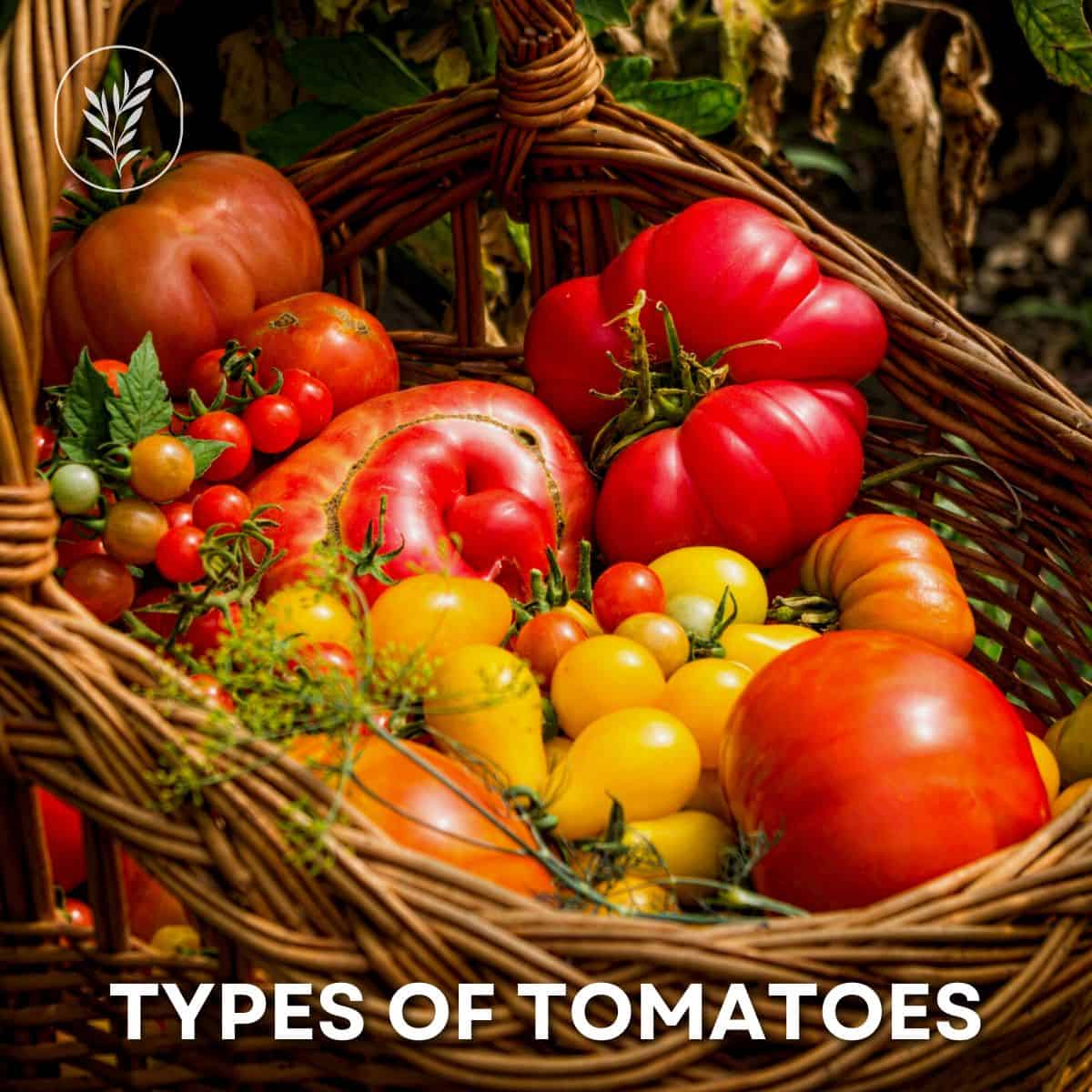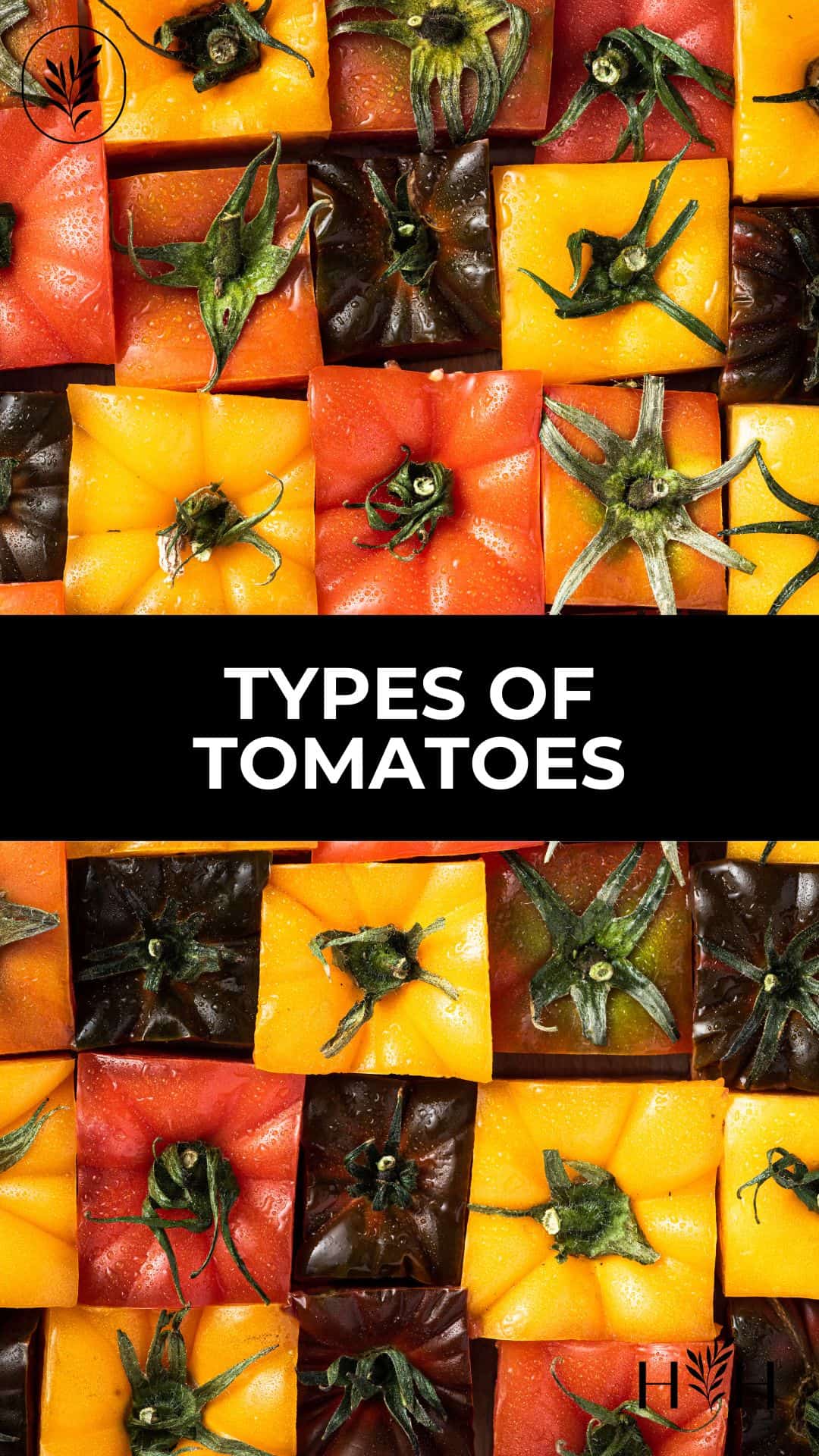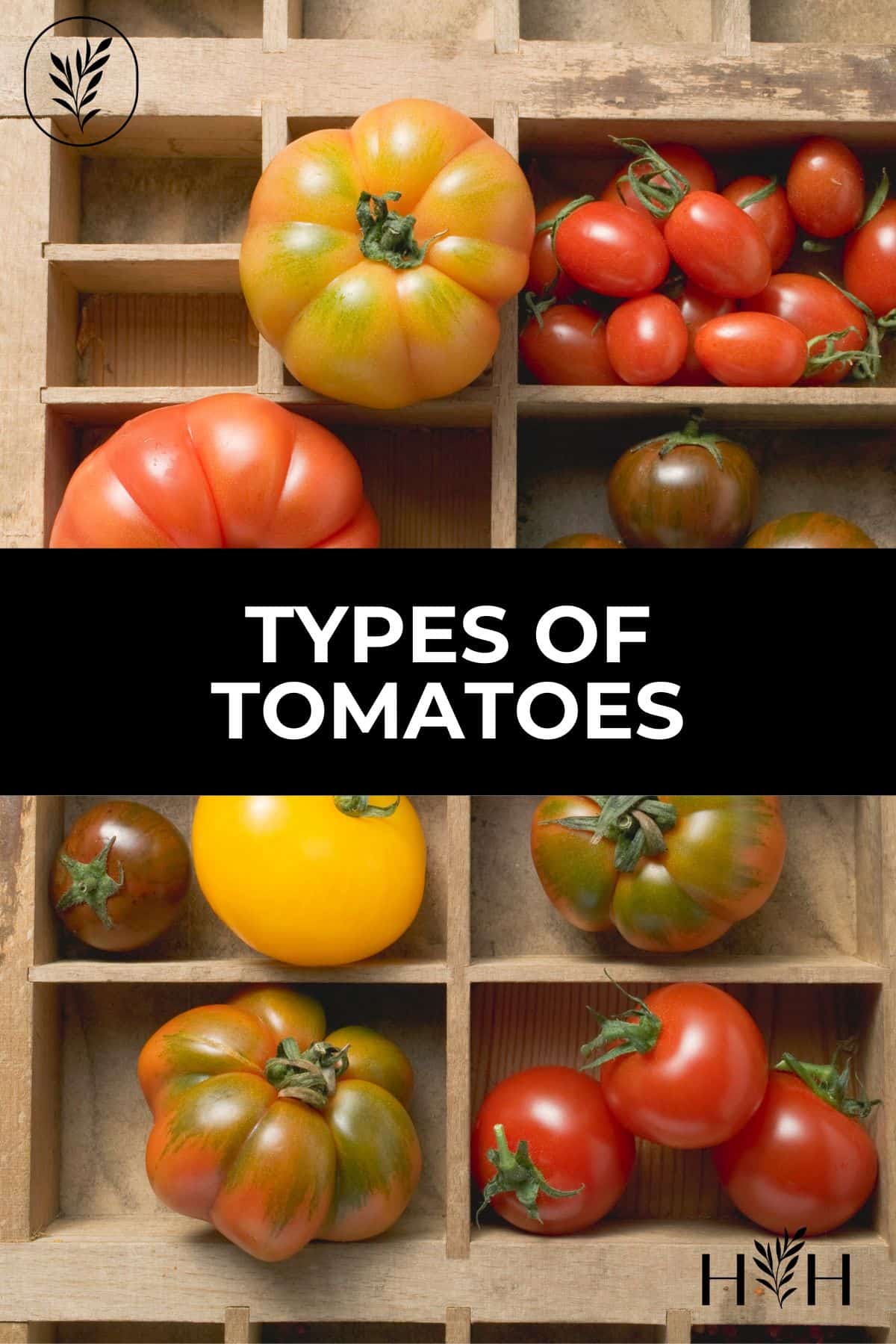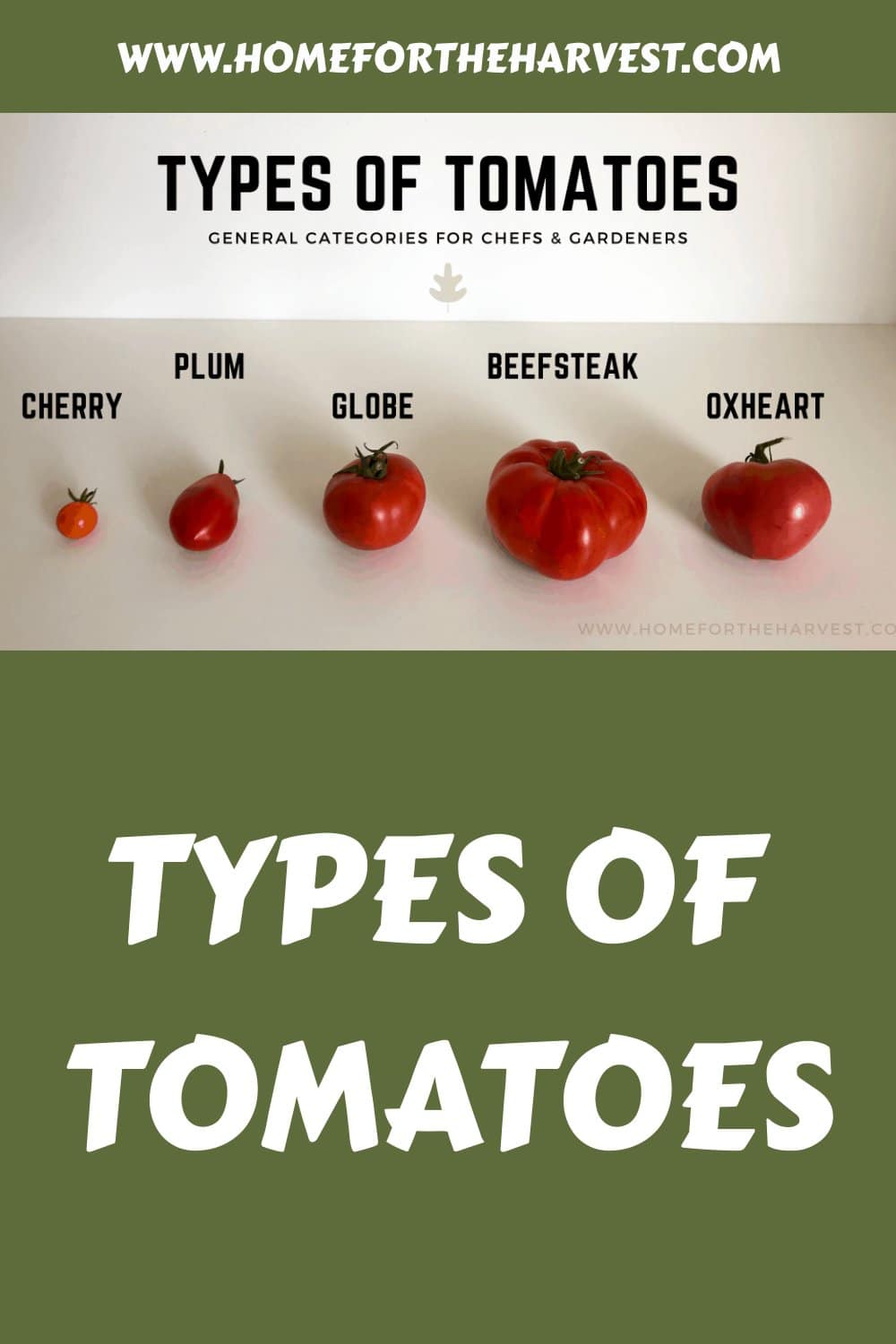Tomatoes are easily found in the grocery store or as seeds in your local home hardware store! Growing tomatoes isn’t difficult, with tons of types of tomatoes to choose from.
They’re a very versatile vegetable, with giant beefy types that can cover an entire sandwich while remaining sweet as candy, but also with tiny little cherry types that deliver that satisfying sour pop when they first ripen.
Here are the five basic types of tomatoes (as categorized by shape and size):
- Standard Globe Tomatoes (Regular-Sized Slicer Tomatoes)
- Beefsteak Tomatoes (Large Slicer Tomatoes)
- Cherry Tomatoes (Mini Tomatoes)
- Plum Tomatoes (Paste Tomatoes)
- Oxheart Tomatoes (Heart-Shaped Tomatoes)
Once categorized by shape and size as above, tomatoes can also be described as either heirloom or hybrid, determinate or indeterminate, and also by peel color.
Read on to learn all about the different types of tomatoes (including examples of each type!).
“You’ve got your huge beefsteaks, your tidy little pasters, your sweet, invasive little cherries (a.k.a. weeds), your romantic (kind of) looking oxhearts, and your regular round slicing/salad tomatoes. If you’ve got the room, grow at least one of each type you can come up with – and don’t be didactic about how you use them.”
You Bet Your Garden Guide to Growing Great Tomatoes: How to Grow Great-Tasting Tomatoes in Any Backyard, Garden, or Container, by Mike McGrath

Types of tomatoes by shape & size
The most common way that tomatoes are sorted into different types is by shape and size. There are five main types of tomatoes: Globe, Beefsteak, Cherry, Plum, and Oxheart. There are 1000+ different tomato varieties, which can each be placed into one of these five main categories.
The smallest tomatoes are less than an inch wide, while the largest can be over four inches wide. Some are spherical while others are oblong or somewhat flattened.
The shape/size of cultivated tomatoes can correlate to their common preferred culinary uses. For instance, long skinny tomatoes classified as plum tomatoes are preferred for making tomato sauce. Large round tomatoes classified as globe tomatoes or as beefsteak tomatoes are preferred for slicing fresh onto a sandwich.
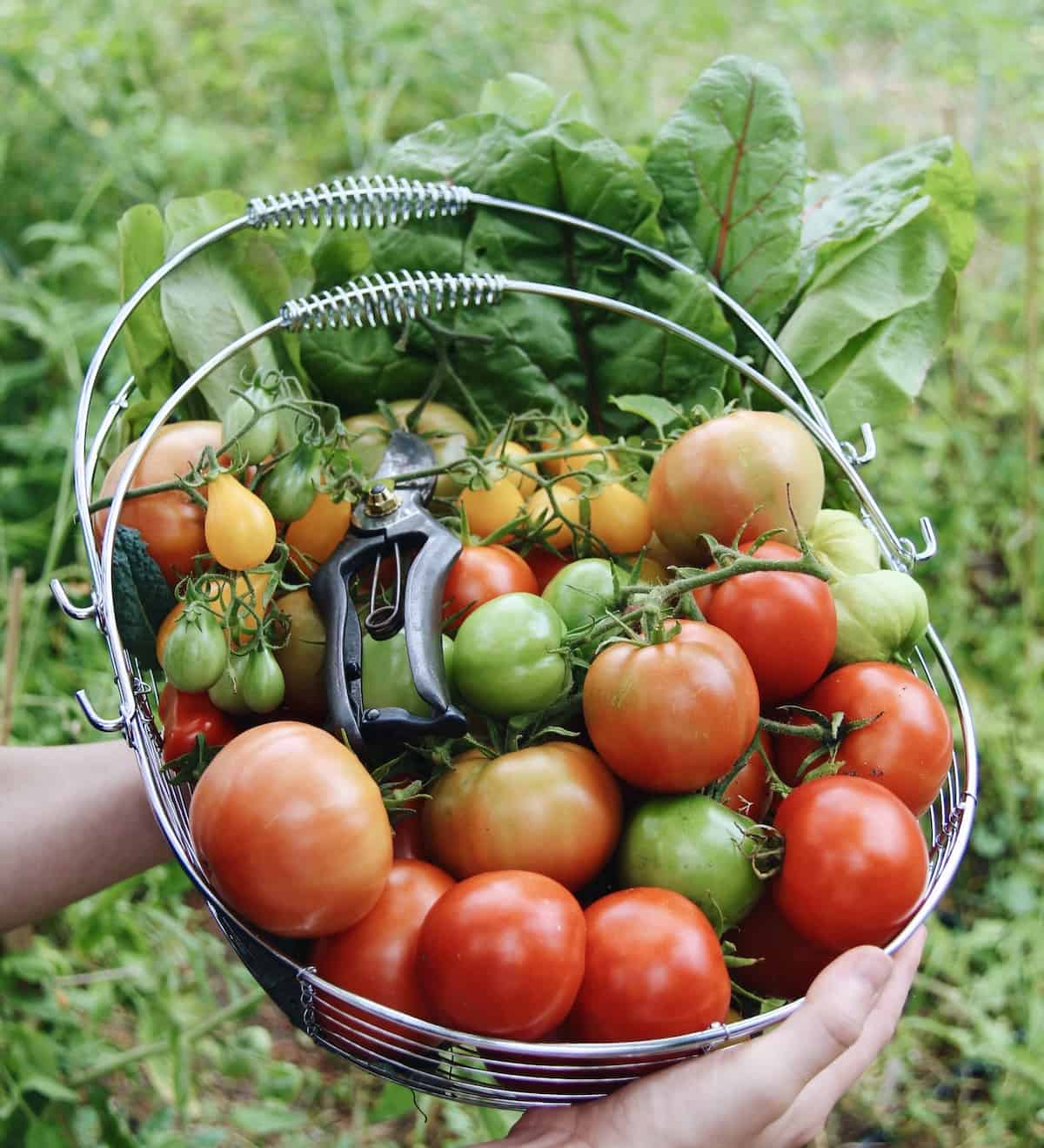
1. Standard globe tomatoes
Standard globe tomatoes are the everyday grocery-store tomatoes that we all grew up with. These are medium-sized slicer tomatoes perfect for salads and other fresh applications. Globe tomato types were bred to be round and have thick skin. They have a uniform, spherical look about them and rarely split. Most importantly, they ship well, are shelf-stable, and are extremely versatile in culinary applications. Due to their all-around appeal, most commercially grown tomatoes are standard globe tomato types.
Standard globe tomatoes are generally about 2 to 2.5 inches across (5-7 cm). Almost all cultivars are red, although there are a few other colors available. These classic domesticated tomatoes are grown in both hothouses (greenhouses) and in open fields. They may be sold on the vine or individually.
What to do with standard globe tomatoes
Globe tomatoes have been bred to withstand shipping, storage, and other hardships of commercially grown tomatoes. Their thick skin helps them stand up to heat in culinary applications. They’re also suitable for eating fresh slices. Use versatile globe tomatoes in sandwiches, burgers, pickling, grilling, salsa, canning, juicing, and egg dishes such as omelets and frittatas.
Example of standard globe tomato cultivars
Here are some common cultivar types of standard globe-round tomatoes:
- Arkansas Traveler Tomato
- Alicante Tomato
- Better Boy Tomato
- Bodacious Tomato
- Bucks County Tomato
- Celebrity Tomato
- Early Girl Tomato
- Fourth of July Tomato
- Green Zebra Tomato
- Marion Tomato
- Moneymaker Tomato
- New Girl Tomato
- Odoriko Tomato
- Rutgers Tomato
- St. Pierre Tomato
- Sweet Tangerine Tomato
- Tigerella Tomato
- Valencia Tomato
Which types of standard globe tomatoes would you like to grow in your garden?
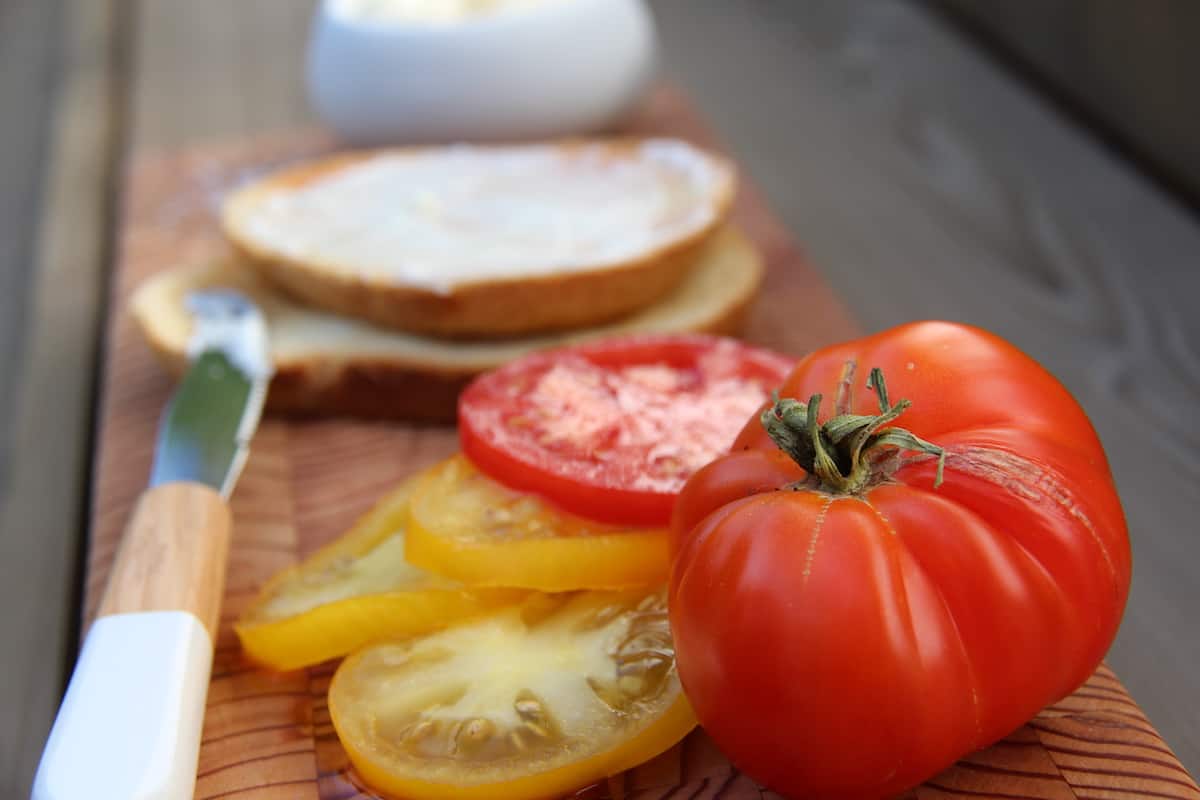
2. Beefsteak tomatoes
Beefsteak-type tomatoes, also called large “slicer” tomatoes, are the classic tomato for enjoying fresh on a piece of toast or simply on their own straight from the vine. These hefty slicing tomatoes are grown in backyards and market gardens for their delicious taste and large size. Many varieties are slightly flattened, lobed, and have small seed cavities. Beefsteak-type tomatoes have a thick consistency, which contributes to their ability to hold shape when being sliced. This makes these tomatoes an ideal choice when making burgers and sandwiches.
Beefsteak tomatoes are generally at least 3-4 inches across and weigh about a pound each. Some beefsteaks can weigh up to 2 or 3 pounds per fruit! These truly are giant tomatoes. These tomatoes were generally bred for flavor, color, or size and are rarely grown commercially due to their thinner skin, long time to maturity, and short ripe shelf life. Grow them on your own or find them at a local farmer’s market!
What to do with beefsteak tomatoes
Beefsteak Tomatoes are perfect for slicing fresh onto a sandwich or diced in a salad. They make beautiful Caprese tomato salads and add brilliant flavor to cooked dishes such as frittatas and fresh pasta.
Example of beefsteak tomato cultivars
Here are some common cultivar types of large beefsteak tomatoes:
- Beefsteak Tomato
- Big Beef Tomato
- Big Boy Tomato
- Beefmaster Tomato
- Aunt Ruby’s German Green Tomato
- Mortgage Lifter Tomato
- Black Krim Tomato
- Brandywine Tomato
- Cherokee Purple Tomato
- Porterhouse Beefsteak Tomato
- Kellogg’s Breakfast Tomato
- Domingo Tomato (the current record-holder for heaviest tomato)
- Striped Marvel Tomato
- Gigantomo Tomato
- Big Rainbow Tomato
- Georgia Streak Tomato
- German Johnson Tomato
- The Pineapple Tomato
- German Queen Tomato
Are you adding any of these yummy beefsteak types to your tomato patch this year? What’s your favorite way to enjoy a nice giant meaty slice of tomato?
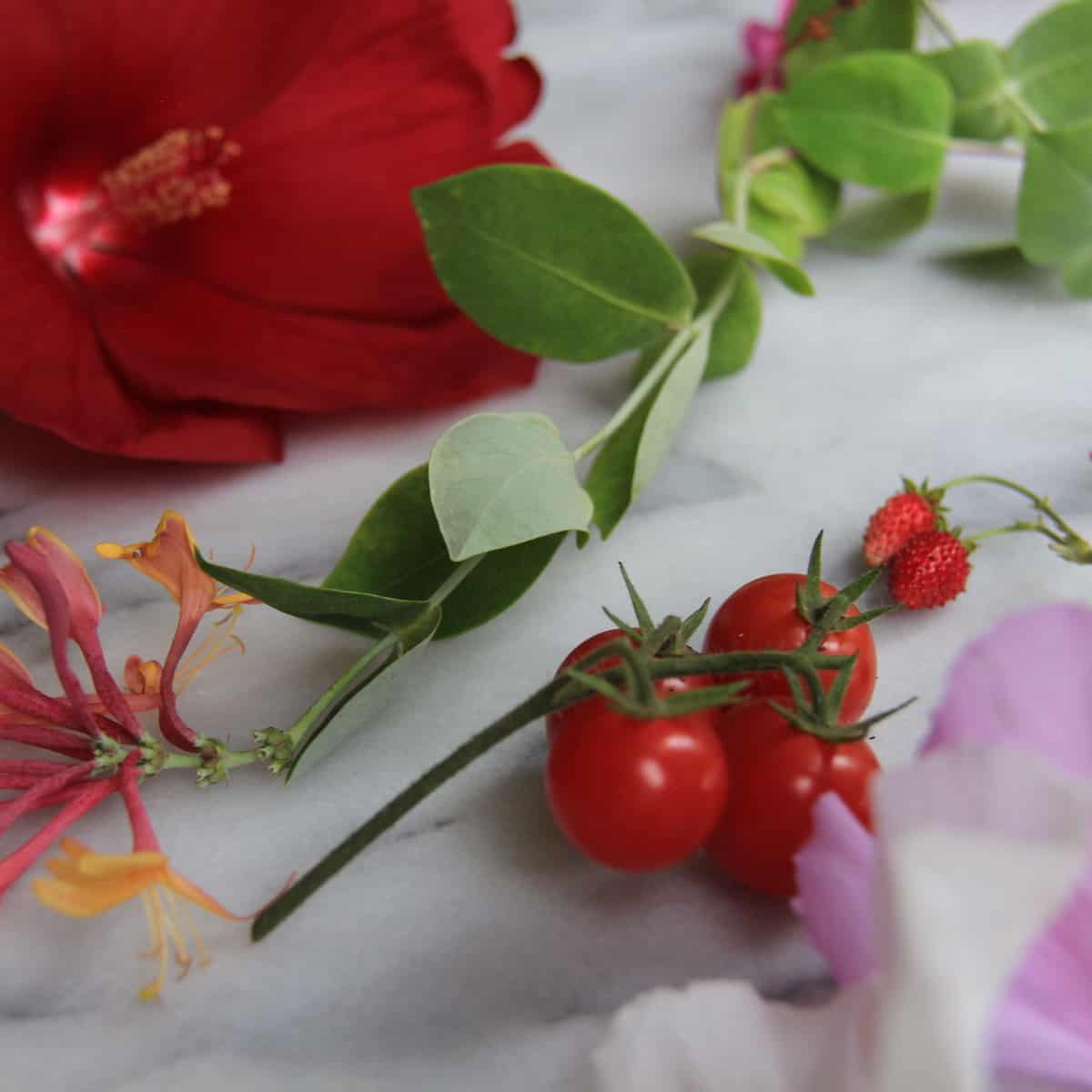
3. Cherry tomatoes
Cherry tomatoes are small, snappy bite-sized tomatoes. This tomato type is reminiscent of the wild tomatoes that still grow as wild berries in South America. Cherry tomatoes can be incredibly juicy, popping at the slightest pressure.
Cherry tomatoes are usually under an inch (2.5 cm) in diameter, although they can range from the size of a tiny currant (“currant tomatoes”) up to the size of a golf ball. They’ve been bred in reds, yellows, purples, and oranges. Most cherry tomato cultivars are spherical “cocktail” types, but some have been bred as slightly oblong “grape” tomatoes. There are even pear-shaped types!
What to do with cherry tomatoes
Cherry tomatoes combine mini-sized cuteness with snappy flavor and a sturdy form. Cherry tomatoes are great for fresh snacking, in salads, for grilling, and in fresh veggie wraps. They are pretty on charcuterie trays and hors d’oeuvres. Cherry tomatoes make great appetizer finger food or can be part of the main course on skewers or mixed into fresh pasta.
Example of cherry tomato cultivars
Here are some common cultivar types of cherry tomato:
- Sun Gold Cherry Tomato
- Tiny Tim Tomato
- Sweet 100 Tomato
- Super Sweet 100 Tomato
- Sweet Million Tomato
- Gold Nugget Cherry Tomato
- Black Cherry Tomato
- Campari Tomato
- Green Grape Tomato
- Riesentraube Tomato
- Honeycomb Tomato
- Midnight Snack Tomato
- Napa Grape Tomato
- Shimmer Tomato
- Sunrise Bumble Bee Tomato
- Tomaccio Tomato
- Wild Currant Tomato
- Yellow Pear Tomato
- Sun Sugar Tomato
Which types of cherry tomatoes have you tried?
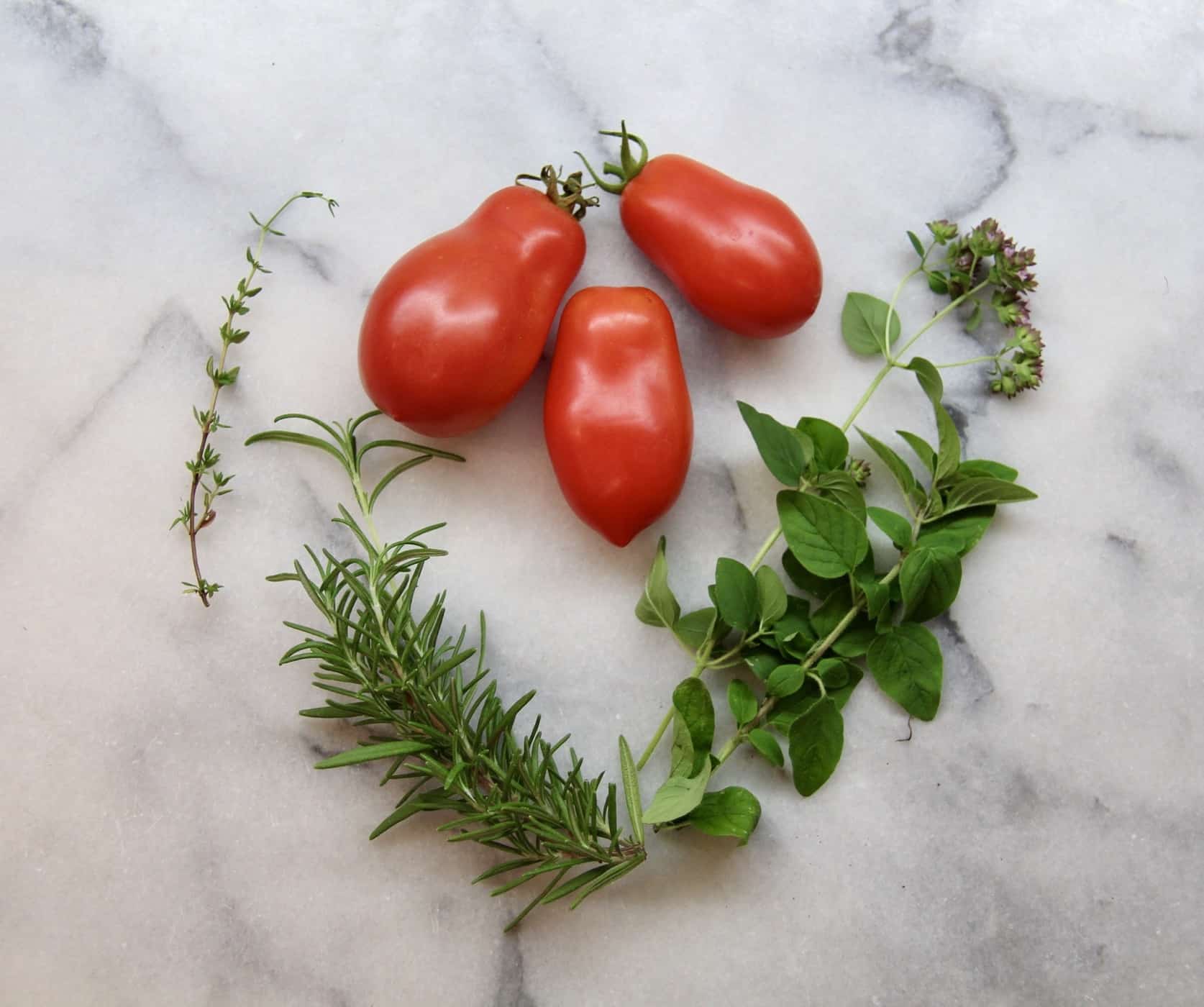
4. Plum tomatoes
Plum tomatoes are oblong tomatoes bred to make excellent tomato sauce. Plum tomatoes are also called processing tomatoes or paste tomatoes. These tomatoes are grown to be cooked! Roast them, blend them, and can to enjoy your tomato harvest all year long.
Plum tomatoes are generally about 2 to 2.5 inches long (5-7 cm), and are almost always oval or cylindrical in shape. They’ve been bred with canning in mind. They’re mainly solid pulp, with easy-to-remove seeds in compact compartments. Many are also bred to shed their skins easily for easier processing of the pulp into the sauce. Plum tomatoes are generally red, although a few varied cultivars exist.
What to do with plum tomatoes
Plum tomatoes are firm, solid, and perfect for making classic tomato sauces. Many plum tomato-type cultivars have been bred for use in classic Italian recipes. They can be canned whole or processed into a thick paste for storage. Plum tomatoes can also be used in applications where a “juicy” tomato is not desired, such as on top of a pizza or to make sun-dried tomatoes.
Example of plum tomato cultivars
Here are some common cultivar types of plum paste tomatoes:
- San Marzano Tomato
- Roma Tomato
- Amish Paste Tomato
- Juliet Tomato
- Big Mama Tomato
- Giulietta F1 Tomato
- Viva Italia Tomato
- Orange Banana Tomato
- Ropreco Paste Tomato
- Supremo Tomato
- Tachi Tomato
- Opalka Tomato
Which type of paste tomatoes have you grown before or found at the farmer’s market?
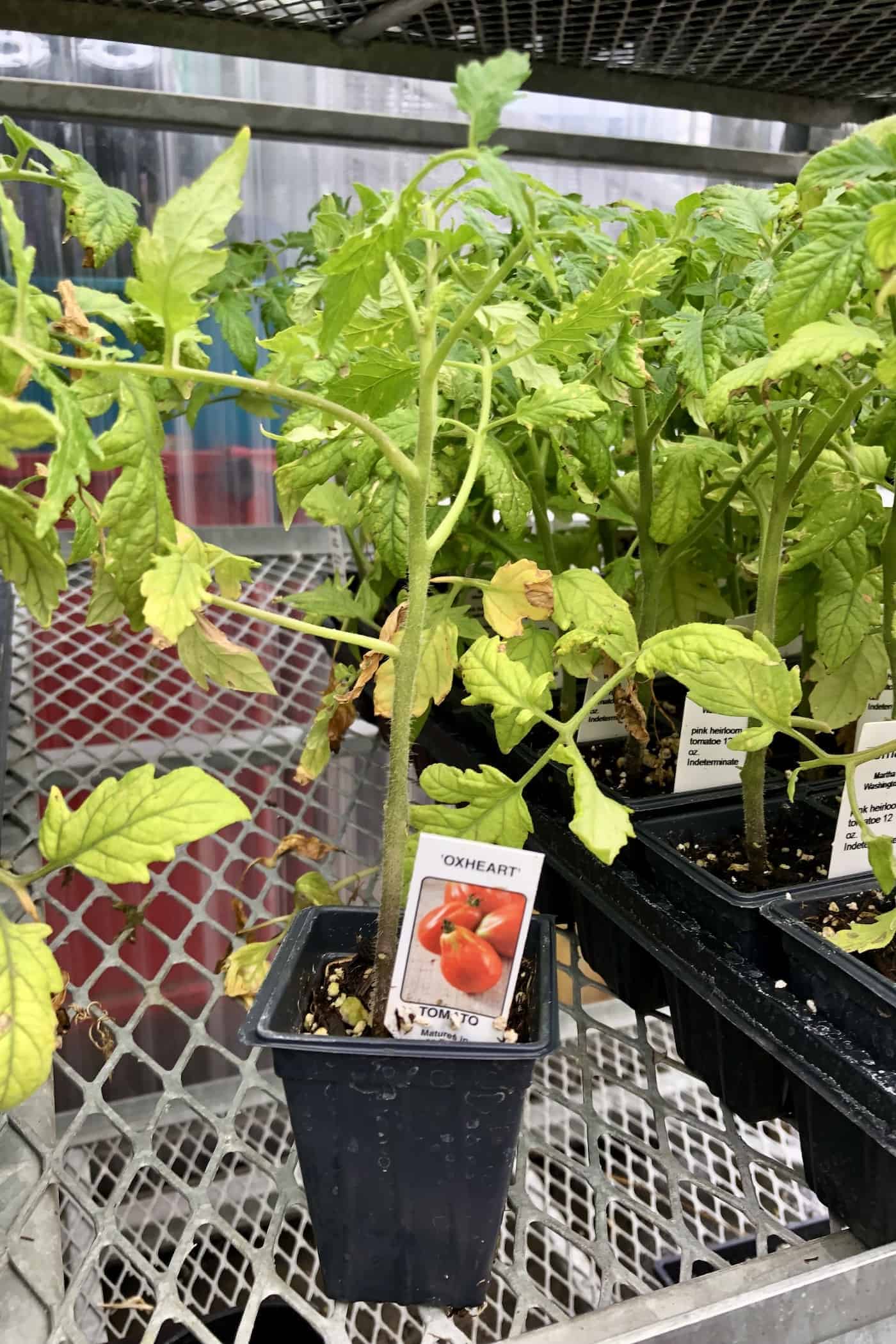
5. Oxheart tomatoes
Oxheart is a unique type of tomato that is shaped like a large strawberry or “heart”. Like beefsteak types, they are mainly heirloom varieties grown for their flavor, size, or thick consistency with very little seed cavity. Unlike beefsteak tomatoes, however, oxheart tomatoes are not lobed and more closely resemble spherical globe tomatoes (with an added pointed end).
What to do with oxheart tomatoes
Oxheart tomatoes are generally used in the same applications as beefsteak, typically for slicing but also for canning.
Example of oxheart tomato varieties
Here are some cultivar types of oxheart tomato:
- Anna Russian Tomato
- Cour di Bue Tomato
- Hungarian Heart Tomato
- Kosovo Tomato
- Livingston’s Giant Oxheart Tomato
- Yellow Oxheart Tomato
Have you seen an oxheart tomato before? Look for them at the farmer’s market!
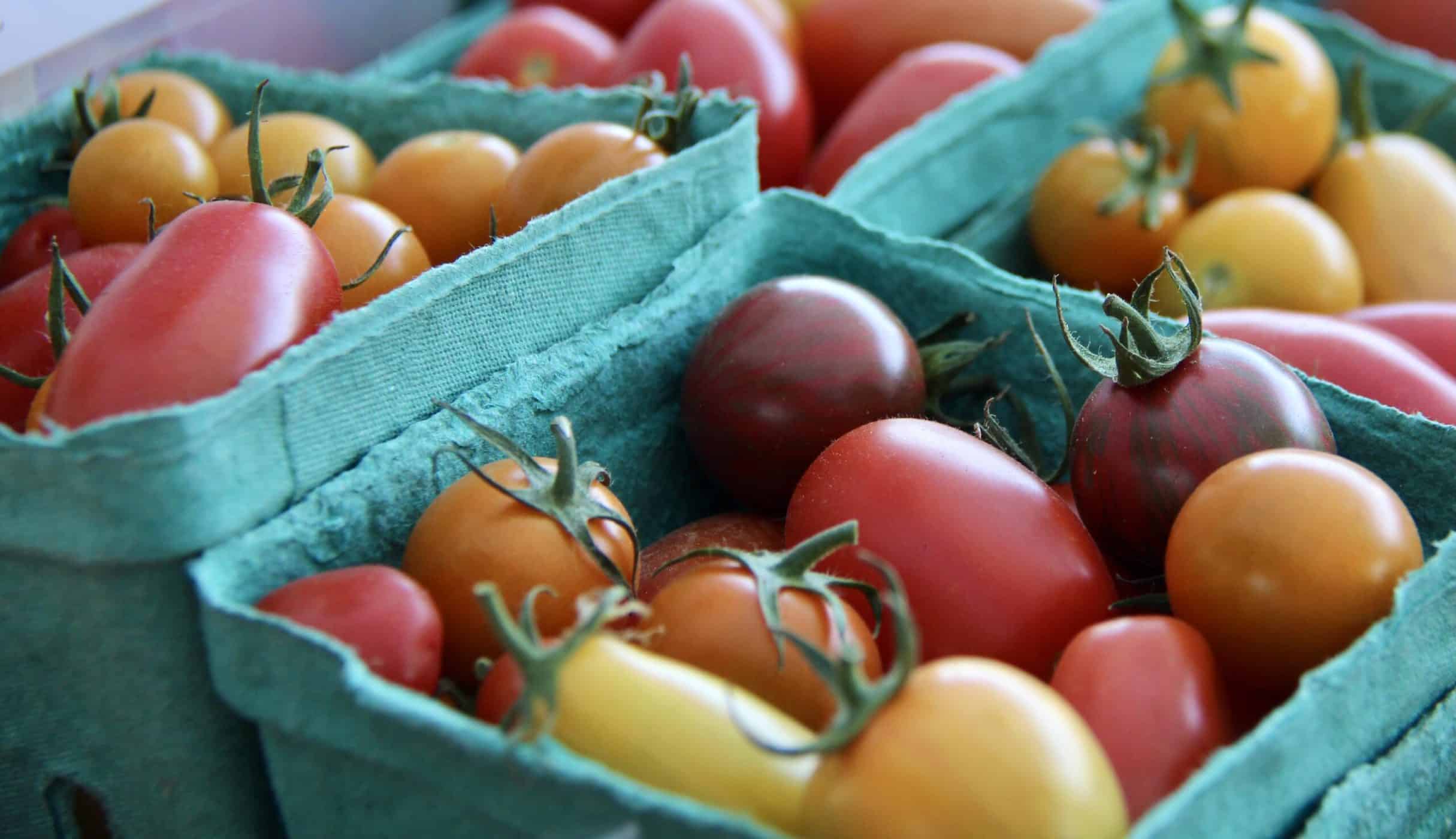
Other ways to categorize types of tomatoes
Tomatoes can be further categorized beyond their shape and size. They are also separated into types by their breeding history, vining habit, and culinary applications.
Heirloom tomatoes vs. Hybrid tomatoes
Heirloom tomatoes are old-fashioned varieties that have been passed down from generation to generation. Heirloom tomatoes are open-pollinated, self-fertile varieties from which seeds can be reliably saved and grown into new plants with the same characteristics. While there are different definitions around, most gardeners consider an heirloom to be a tomato that has bred true for about two generations or at least 40-50 years. Heirloom tomatoes are known for their interesting variety and excellent flavor.
Hybrid tomatoes are modern cultivars that have been bred using natural methods to produce certain types of tomatoes. Hybrid tomatoes are not open-pollinated nor are they heirlooms. To grow the same tomatoes each year, home gardeners must buy new seeds from the seed company each spring. Many hybrids have been bred for specific purposes such as good shipping ability, small growing space, or other novelty traits. Hybrids are known for their ease of growing, disease resistance, and reliable productivity.
It is important to note that the terms heirloom and hybrid have nothing to do with the size or shape of the tomato. There are tiny heirloom cherry tomatoes (Principe Borghese) and giant beefsteak heirloom tomato types (Cherokee Purple). Some everyday-looking globe tomatoes are heirlooms (Bonny Best, Carbon Tomato) and some very interesting-looking tomatoes are not heirlooms at all (Green Zebra).
There are a few types of tomatoes that aren’t hybrids but which also aren’t heirloom tomatoes. These are open-pollinated tomato cultivars that have been bred during the last generation, often by heirloom tomato enthusiasts. Many gardeners refer to these new open-pollinated varieties as “heritage” tomatoes or “modern heirloom” tomatoes.
Determinate tomato plants vs. Indeterminate tomato plants
This type of tomato classification refers to the vining habit of the plant. Determinate tomatoes have a relatively “pre-determined” size. They grow in a bush form and then set all their fruit at once. Indeterminate tomatoes, on the other hand, grow on long rambling vines and set fruit as they grow. These ramblers keep on growing (and fruiting) until killed by frost or disease.
Indeterminate tomato plants can be perennials in their native habitat. While tomatoes are not long-lived plants, they can survive for multiple years if conditions allow (warm temperatures, disease-free). Determinate tomato plants are annuals. They grow to their mature size and then set all of their fruit at once, just like other annual vegetables in our garden. Both indeterminate and determinate tomatoes are almost always grown as annuals in home gardens.
While there are certainly exceptions, most cultivated heirloom tomatoes grow on large, vining indeterminate tomato plants. This is perfect for home gardeners who want a small but continuous supply of fresh tomatoes for their household. These plants space out the timing of their ripe tomatoes. They just keep on growing! Indeterminate tomatoes, including most heirlooms, require large tomato cages (or at least a tomato stake) to support their heavy vines.
Many hybrids have been bred as determinate types that grow to a controlled, reliable specific size. Many commercial growers prefer determinate types as they can be harvested all at once. This all-in-one harvest preference also holds true for home growers who enjoy canning their tomato harvest. They’re also great for small-space growers and gardeners who don’t want to build a huge trellis to support a giant indeterminate Brandywine or Brandy Boy plant!
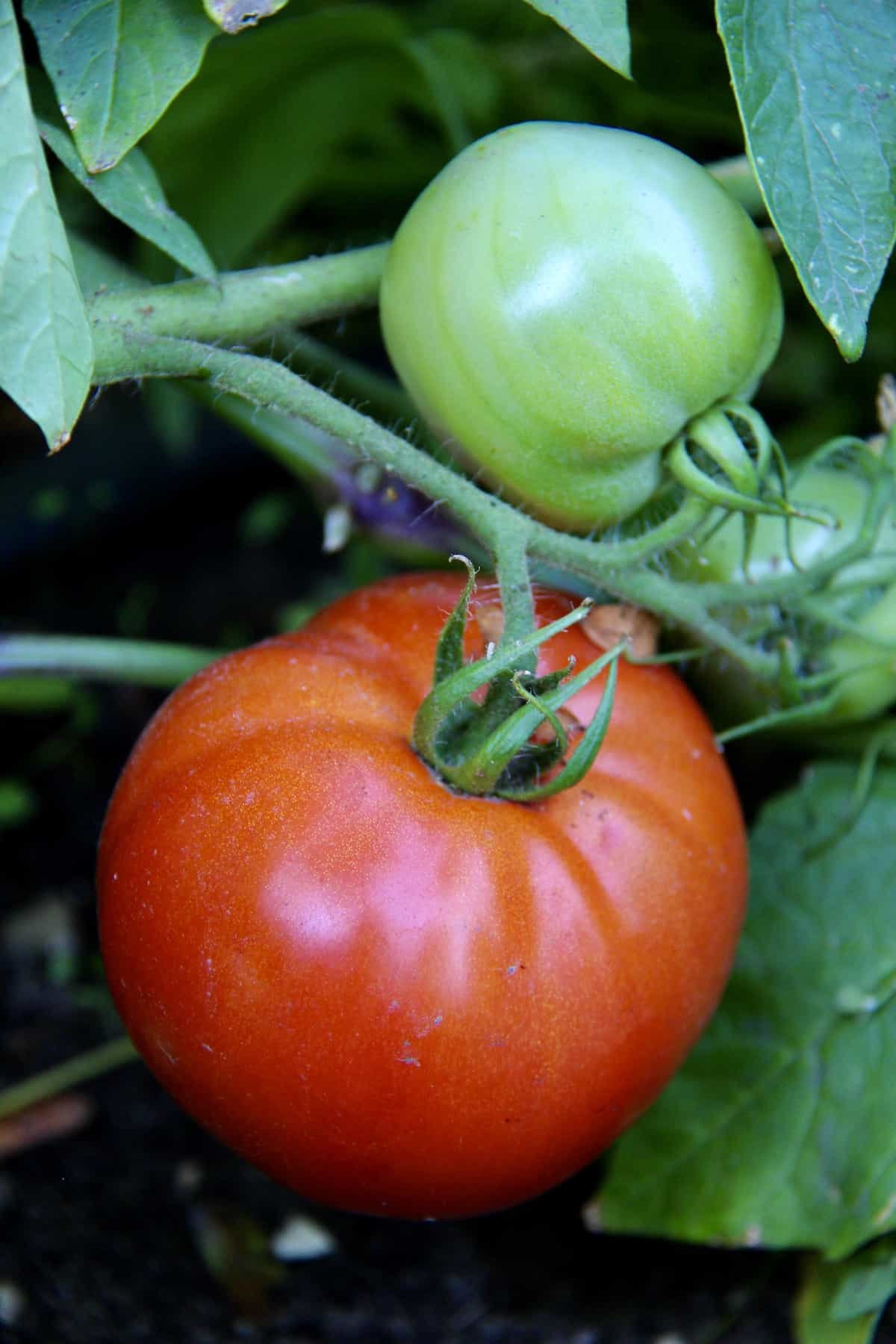
Slicing tomatoes vs. Paste tomatoes
Slicing tomatoes are tomatoes that are well-suited to fresh eating. Beefsteak tomatoes are the largest slicing tomatoes, standard globe-type tomatoes are the most common, and even cherry tomatoes can also be used for slicing (particularly in salads). Here are some of the best-tasting fresh tomato varieties to try.
Paste tomatoes are tomatoes that are well-suited to sauces and canning. These tomatoes make wonderful tomato paste and are long-lasting when preserved. While most paste tomatoes are plum tomatoes, there are several varieties of globe, oxheart, and cherry tomatoes that have been cultivated specifically for preserving instead of for fresh eating. For example, the Italian heirloom cherry tomato “Principe Borghese” is well-known as being for sun-drying and for making flavorful tomato sauce.
Some tomato varieties are known as only “slicing”, others are called “paste”, and some are referred to as good for both fresh slicing and for sauce-making. These dual-purpose tomatoes are great all-around choices. Many standard globe tomatoes can be used effectively for both fresh eating and for preserving.


